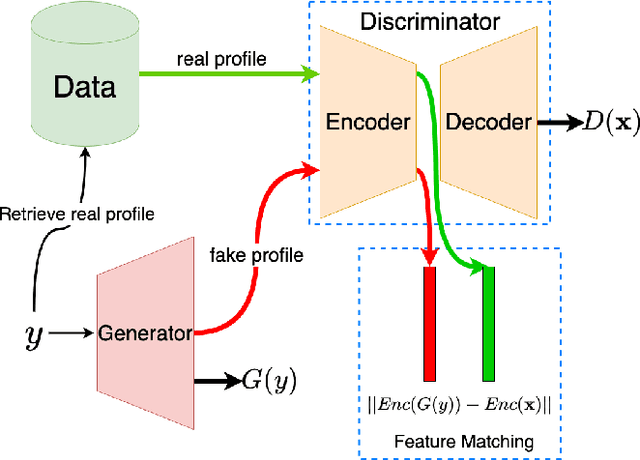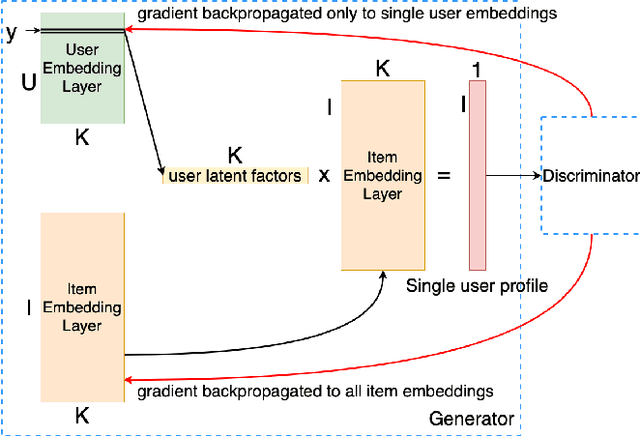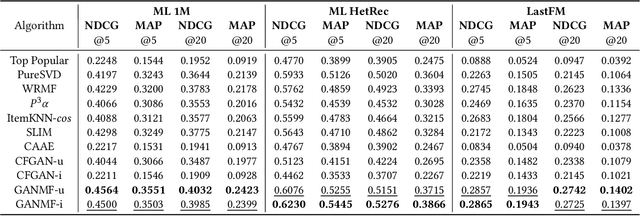GAN-based Matrix Factorization for Recommender Systems
Paper and Code
Jan 20, 2022



Proposed in 2014, Generative Adversarial Networks (GAN) initiated a fresh interest in generative modelling. They immediately achieved state-of-the-art in image synthesis, image-to-image translation, text-to-image generation, image inpainting and have been used in sciences ranging from medicine to high-energy particle physics. Despite their popularity and ability to learn arbitrary distributions, GAN have not been widely applied in recommender systems (RS). Moreover, only few of the techniques that have introduced GAN in RS have employed them directly as a collaborative filtering (CF) model. In this work we propose a new GAN-based approach that learns user and item latent factors in a matrix factorization setting for the generic top-N recommendation problem. Following the vector-wise GAN training approach for RS introduced by CFGAN, we identify 2 unique issues when utilizing GAN for CF. We propose solutions for both of them by using an autoencoder as discriminator and incorporating an additional loss function for the generator. We evaluate our model, GANMF, through well-known datasets in the RS community and show improvements over traditional CF approaches and GAN-based models. Through an ablation study on the components of GANMF we aim to understand the effects of our architectural choices. Finally, we provide a qualitative evaluation of the matrix factorization performance of GANMF.
 Add to Chrome
Add to Chrome Add to Firefox
Add to Firefox Add to Edge
Add to Edge